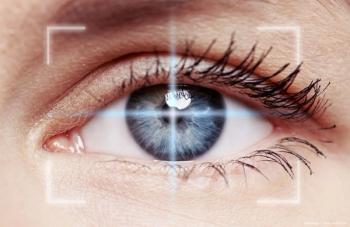
Seeking 'root cause' of post-LASIK symptoms
San Francisco—Capt. Steven Schallhorn, MD, addressed two timely issues at the annual San Francisco Cornea, Cataract, and Refractive Surgery Symposium. The first was the effect of pupil size on visual symptoms after LASIK and the second, custom-guided PRK procedures related to visual results and improved quality of vision.
San Francisco-Capt. Steven Schallhorn, MD, addressed two timely issues at the annual San Francisco Cornea, Cataract, and Refractive Surgery Symposium. The first was the effect of pupil size on visual symptoms after LASIK and the second, custom-guided PRK procedures related to visual results and improved quality of vision.
Regarding pupil size, the process of reducing a patient's sphere and cylinder during LASIK also commonly increases higher-order aberrations.
"This is probably the root cause of why some patients have symptoms after LASIK," said Dr. Schallhorn, director of cornea and refractive surgery, Naval Medical Center, San Diego. "A patient can attain 20/20 uncorrected vision afterward but complains about the quality of his or her vision. This has led to numerous discussions of the role the pupil size plays in visual disturbances.
In clinical practice, he pointed out, there are issues related to the pupil, but there are no standard methods to measure the low-light pupil diameter. Many factors such as medications, stress, and accommodation can influence the pupil size, yet there is no consistent method to control them during pupil measurement. In addition, the true scotopic pupil diameter is not relevant to the lighting conditions (mesopic range) under which patients have visual symptoms.
To determine the role of the pupil in predicting which patients will develop visual symptoms after refractive surgery, Dr. Schallhorn and colleagues conducted a study that evaluated conventional LASIK using several different lasers in 442 patients (884 eyes).
The mean preoperative manifest spherical equivalent was–3.61 D (range, –1.13 to –11.25 D), 1 month postoperatively 0.02 D, and 6 months postoperatively –0.08 D. One and 6 months postoperatively, 83% and 79%, respectively, achieved 20/20 uncorrected visual acuity, and 99% and 98% achieved 20/40 uncorrected visual acuity.
To determine the factors predictive of postoperative visual disturbances, multi-regression analyses evaluated age, gender, complaint, pupil diameter, pupil diameter minus the optical zone, contrast acuity, treatment parameters (sphere, cylinder, manifest spherical equivalent, and minor axis), and postoperative results (sphere, cylinder, manifest spherical equivalent, uncorrected visual acuity, and contrast acuity), he said.
Newsletter
Don’t miss out—get Ophthalmology Times updates on the latest clinical advancements and expert interviews, straight to your inbox.
















































.png)


